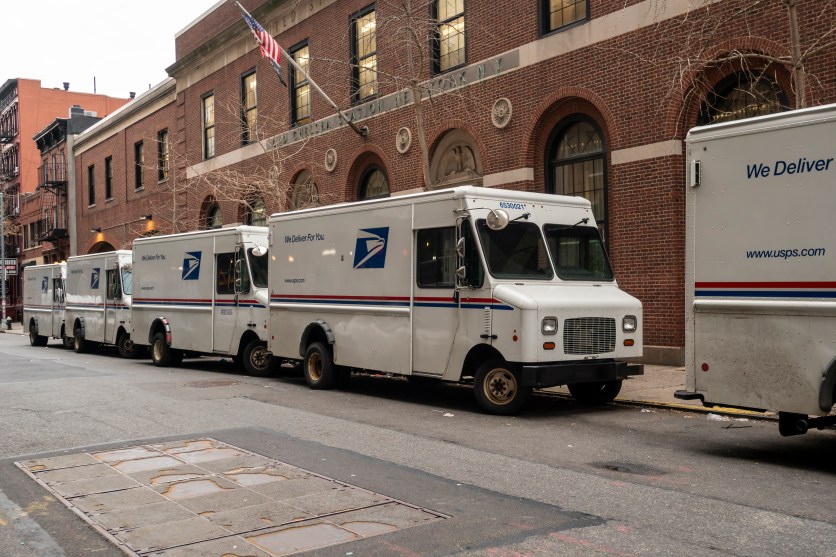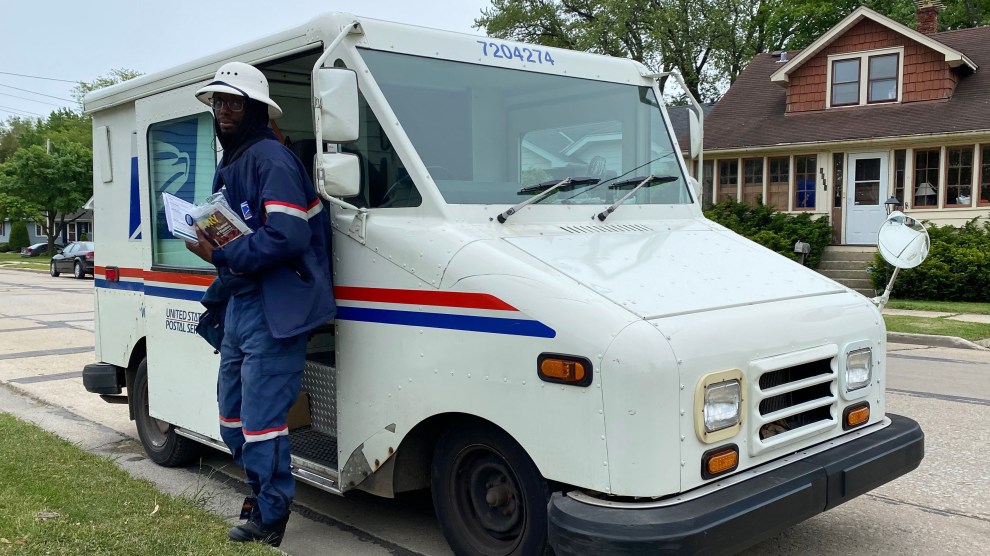
Richard B. Levine/Levine Roberts/Zuma
Forget Dylan in ’65. Get ready for the USPS in ’26.
Last month, the USPS laid out its plan for increasing the proportion of electric vehicles from the 10 percent it initially promised: By 2028, 45,000 of the 60,000 new purpose-build mail trucks will be electric, as will 21,000 of the 46,000 additional “commercial off-the-shelf” vehicles the USPS is purchasing. Starting in 2026, the USPS expects all of its new acquisitions to be electric. The purchases amount to a $9.6 billion investment.
Last year, the United States Postal Service announced that it planned to replace its outdated mail delivery fleet with new, mostly gas-guzzling trucks. There was immediate backlash.
Lawmakers and environmental groups had pushed for the agency to go fully electric, noting that the postal trucks’ short routes and designated nightly parking places were conducive to electric battery charging. USPS said that it didn’t have the funds.
But then the Inflation Reduction Act allocated $3 billion for zero-emission delivery trucks and supporting infrastructure.
“The $3 billion provided by Congress has significantly reduced the risk associated with accelerating the implementation of a nationwide infrastructure necessary to electrify our delivery fleet,” Postmaster General Louis DeJoy said in a statement, adding that the USPS will also cut down on carbon emissions by creating a more efficient delivery network with less air cargo and fewer truck trips.
Beep, beep. A new era of electric mail delivery is on its way.
















